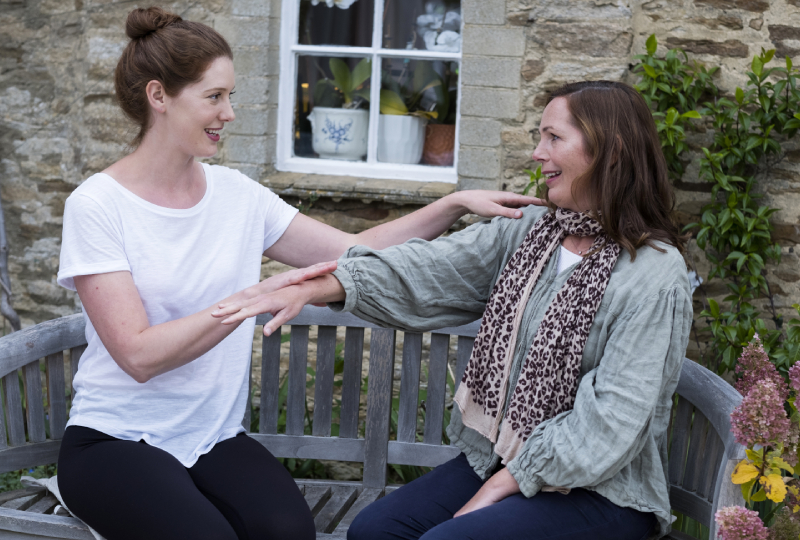Understanding Life After Treatment
Transitioning to Life After Treatment
Transitioning to life after treatment can be a significant adjustment for many individuals. The journey of recovery involves not only overcoming addiction or managing mental health issues but also reintegrating into daily life with new perspectives and habits. This period can be both exciting and challenging as we navigate the changes and strive to maintain the progress made during treatment.
One of the key aspects of this transition is establishing a routine that supports our new lifestyle. This may include regular activities such as attending support group meetings, engaging in healthy hobbies, and maintaining a balanced diet. By creating a structured routine, we can provide ourselves with a sense of stability and purpose.
Another important factor is the development of coping strategies to handle potential triggers and stressors. These strategies can include mindfulness practices, physical exercise, and seeking support from trusted individuals. By having a plan in place, we can better manage difficult situations and reduce the risk of relapse.
Importance of Creating a Vision
Creating a vision for a fulfilling life after treatment is essential for long-term success and happiness. A clear vision helps us to stay focused on our goals and provides motivation to continue making positive choices. It serves as a roadmap, guiding us through the various stages of recovery and personal growth.
To create a vision, we need to reflect on our values, passions, and aspirations. This involves identifying what truly matters to us and what we want to achieve in different areas of our lives, such as relationships, career, and personal development. By aligning our actions with our vision, we can create a life that is meaningful and satisfying.
A well-defined vision also helps us to set realistic and achievable goals. These goals can be broken down into short-term and long-term objectives, allowing us to track our progress and celebrate our achievements along the way. By regularly reviewing and adjusting our goals, we can ensure that we remain on the path to a fulfilling life.
| Aspect of Life | Short-Term Goals | Long-Term Goals |
|---|---|---|
| Relationships | Reconnect with family | Build strong, supportive friendships |
| Career | Update resume | Pursue a fulfilling career |
| Personal Development | Read self-help books | Attend workshops and courses |
| Health | Exercise regularly | Maintain a balanced diet |
By understanding the importance of creating a vision and setting goals, we can empower ourselves to build a fulfilling life after treatment. This proactive approach not only enhances our recovery journey but also contributes to our overall well-being and happiness.
Setting Goals for a Fulfilling Life
Identifying Personal Values and Priorities
Creating a vision for a fulfilling life after treatment begins with identifying our personal values and priorities. Understanding what truly matters to us helps in setting meaningful goals that align with our core beliefs. This process involves introspection and self-reflection to determine what we value most in life.
We can start by asking ourselves questions such as:
- What activities bring us joy and satisfaction?
- What qualities do we admire in others and wish to embody?
- What are our non-negotiables in life?
By answering these questions, we can create a list of our top values and priorities. This list will serve as a foundation for setting goals that resonate with our true selves.
Establishing Short-Term and Long-Term Goals
Once we have identified our values and priorities, the next step is to establish short-term and long-term goals. Setting goals provides direction and motivation, helping us stay focused on our vision for a fulfilling life after treatment.
Short-Term Goals
Short-term goals are objectives we aim to achieve in the near future, typically within a few weeks to a few months. These goals should be specific, measurable, achievable, relevant, and time-bound (SMART). Examples of short-term goals include:
- Attending weekly support group meetings
- Practicing mindfulness meditation for 10 minutes daily
- Reconnecting with a family member or friend
Long-Term Goals
Long-term goals are aspirations we aim to achieve over an extended period, usually several months to years. These goals require sustained effort and commitment. Examples of long-term goals include:
- Completing a degree or certification program
- Securing a stable job in a desired field
- Building and maintaining healthy relationships
| Goal Type | Time Frame | Examples |
|---|---|---|
| Short-Term | Weeks to Months | Attending support groups, Daily meditation, Reconnecting with loved ones |
| Long-Term | Months to Years | Completing education, Securing a job, Building relationships |
By setting both short-term and long-term goals, we create a roadmap for our journey towards a fulfilling life. Regularly reviewing and adjusting these goals ensures that we stay aligned with our values and priorities, making our vision a reality.
Building a Support System
Creating a vision for a fulfilling life after treatment involves building a strong support system. This support system can be divided into two main categories: family and friends support, and professional support services.
Family and Friends Support
Family and friends play a crucial role in the recovery journey. Their support can provide emotional stability, encouragement, and a sense of belonging. It’s important to communicate openly with loved ones about your needs and goals. This helps them understand how they can best support you.
| Type of Support | Description |
|---|---|
| Emotional Support | Listening, empathy, and encouragement |
| Practical Support | Assistance with daily tasks and responsibilities |
| Social Support | Engaging in activities and maintaining social connections |
Professional Support Services
Professional support services are essential for maintaining long-term recovery and achieving a fulfilling life after treatment. These services can include therapy, counseling, and support groups. Professionals can offer guidance, coping strategies, and resources tailored to individual needs.
| Service Type | Description |
|---|---|
| Therapy | Individual or group sessions with a licensed therapist |
| Counseling | Guidance and support from a trained counselor |
| Support Groups | Peer-led groups for sharing experiences and advice |
By combining the support of family and friends with professional services, we can create a comprehensive support system that fosters growth and resilience. This balanced approach helps us stay committed to our vision for a fulfilling life after treatment.
Embracing Self-Care Practices
Self-care is a crucial component of creating a vision for a fulfilling life after treatment. By focusing on both physical and mental well-being, we can build a strong foundation for long-term recovery and personal growth.
Physical Well-being
Maintaining physical health is essential for overall well-being. Engaging in regular exercise, eating a balanced diet, and getting adequate sleep are key practices that support physical health.
| Activity | Recommended Frequency | Benefits |
|---|---|---|
| Exercise | 3-5 times per week | Improves cardiovascular health, boosts mood, increases energy levels |
| Balanced Diet | Daily | Provides essential nutrients, supports immune function, maintains healthy weight |
| Sleep | 7-9 hours per night | Enhances cognitive function, supports emotional regulation, promotes physical recovery |
Incorporating these activities into our daily routine can help us feel more energized and resilient, making it easier to navigate the challenges of life after treatment.
Mental and Emotional Well-being
Caring for our mental and emotional health is equally important. Practices such as mindfulness, therapy, and engaging in hobbies can significantly improve our mental state and emotional resilience.
| Practice | Description | Benefits |
|---|---|---|
| Mindfulness | Meditation, deep breathing exercises | Reduces stress, improves focus, enhances emotional regulation |
| Therapy | Individual or group sessions | Provides support, fosters self-awareness, aids in processing emotions |
| Hobbies | Activities we enjoy (e.g., reading, painting, gardening) | Boosts mood, provides a sense of accomplishment, reduces stress |
By prioritizing these self-care practices, we can create a balanced and fulfilling life after treatment. Embracing both physical and mental well-being allows us to build a strong foundation for continued growth and recovery.
Exploring Opportunities for Growth
Education and Skill Development
As we transition to life after treatment, exploring opportunities for growth becomes essential. Education and skill development play a crucial role in creating a vision for a fulfilling life. By enhancing our knowledge and abilities, we can open doors to new possibilities and build a strong foundation for our future.
Pursuing further education can take many forms, from enrolling in formal academic programs to participating in workshops and online courses. Identifying areas of interest and setting educational goals can help us stay motivated and focused on our personal growth journey.
| Education Path | Description | Duration |
|---|---|---|
| High School Diploma/GED | Completing secondary education | 1-2 years |
| Vocational Training | Specialized training in specific trades | 6 months – 2 years |
| Associate Degree | Undergraduate academic degree | 2 years |
| Bachelor’s Degree | Undergraduate academic degree | 4 years |
| Online Courses | Flexible learning options in various subjects | Varies |
Skill development is equally important. Acquiring new skills or improving existing ones can boost our confidence and enhance our employability. We can explore various skill development opportunities, such as:
- Technical skills (e.g., computer programming, graphic design)
- Soft skills (e.g., communication, teamwork)
- Life skills (e.g., time management, financial literacy)
Career and Vocational Paths
Creating a vision for a fulfilling life after treatment also involves exploring career and vocational paths. Identifying our interests, strengths, and values can guide us in choosing a career that aligns with our goals and aspirations.
We can start by researching different career options and understanding the qualifications and skills required for each. This can help us make informed decisions about our professional journey. Additionally, seeking guidance from career counselors or mentors can provide valuable insights and support.
Vocational paths offer practical training and hands-on experience in specific trades or professions. These paths can be particularly beneficial for those who prefer a more direct route to employment. Vocational training programs often provide certifications that can enhance our job prospects and earning potential.
By exploring education, skill development, and career opportunities, we can create a vision for a fulfilling life after treatment. Embracing these growth opportunities empowers us to build a brighter future and achieve our personal and professional goals.
Celebrating Milestones and Progress
Acknowledging Achievements
Recognizing and celebrating achievements is crucial in maintaining motivation and a positive outlook on life after treatment. Acknowledging both small and significant milestones helps us to see the progress we’ve made and reinforces our commitment to our vision for a fulfilling life.
| Milestone | Description | Celebration Ideas |
|---|---|---|
| 1 Month Sober | Completing the first month of sobriety | Treat yourself to a special meal or activity |
| 6 Months Sober | Half-year mark of sobriety | Plan a small gathering with supportive friends and family |
| 1 Year Sober | One year of sobriety | Reflect on your journey and consider sharing your story to inspire others |
| Completing a Course | Finishing an educational or skill development course | Reward yourself with a certificate or a new book related to your interests |
| New Job | Securing a new job or promotion | Celebrate with a day off or a fun outing |
Staying Committed to the Vision
Staying committed to our vision for a fulfilling life after treatment requires ongoing effort and dedication. Here are some strategies to help us remain focused and motivated:
- Regular Reflection: Take time to reflect on our progress and the goals we’ve achieved. This helps us stay connected to our vision and recognize the positive changes in our lives.
- Journaling: Keeping a journal allows us to document our thoughts, feelings, and experiences. This practice can provide valuable insights and help us stay on track.
- Support Groups: Participating in support groups offers a sense of community and accountability. Sharing our journey with others who understand our experiences can be incredibly empowering.
- Mindfulness Practices: Incorporating mindfulness practices such as meditation or yoga can help us stay grounded and focused on our goals.
- Setting New Goals: Continuously setting new short-term and long-term goals keeps us motivated and provides a clear path forward.
By celebrating our milestones and staying committed to our vision, we can create a fulfilling and meaningful life after treatment.







